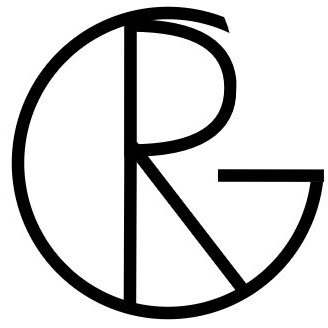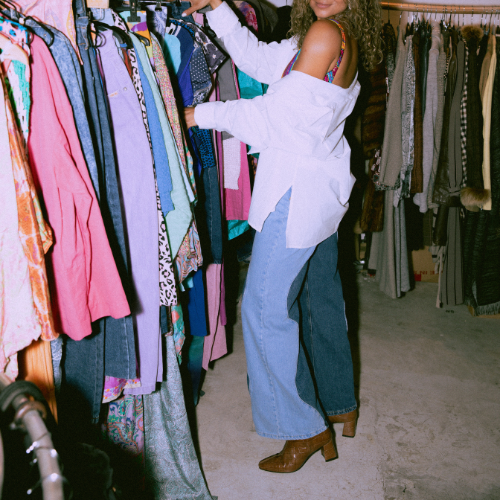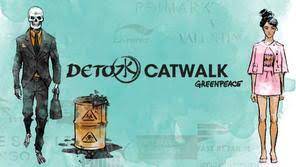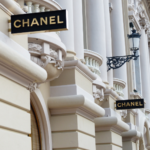Doing research on every brand that you want to buy from is time-consuming and exhausting. Luckily for us, there are websites and apps that you can use to quickly check which brands are sustainable or not. In this article, I will give you some websites where you can find a lot of information on the sustainability of different fashion brands.
Good On You
Let’s start off with one of my favorite websites: Good On You (who by the way also has an app). This website has information on almost every brand you can think of, and they are constantly improving and upgrading their website.
Good On You rates the brands from 1 (we avoid) to 5 (great) based on 3 dimensions: Planet, People, and Animals. In order for a brand to score great, it has to score high on all three aspects.
3 dimensions explained
People:
Good On You looks at the brands’ impact on workers across the whole supply chain. Including whether or not child labor is involved, if workers receive al fair wages, and if there is gender equality along the supply chain. They also see how well the brands’ policies are implemented. Something they’ve added in recent months is how the companies handle COVID-19.
Planet:
As for the planet dimension, Good On You looks at the waste management of brands. They also look at the policies in place in order to address carbon emissions, water pollution, microfibre pollution, and chemical use and disposal.
Animals:
For the last dimension, Good On You looks at how well brands trace their animal products and what animal policies are in place. They also look at what type of animal products brands use, and whether that includes exotic animals.
Transparency is also important in the rating for Good On You, and the site also checks whether or not brands are taking positive steps towards the future. Negative activities such as lobbying against legislation to increase transparency or reduce harm.
The information Good On You uses is from the company’s reports, third parties (such as the transparency index by Fashion revolution), and certifications.
Overall, this website is amazing if you want to look for a short overview of different brands, and I love to use it for my own research.
To visit Good On You click here.
EP&L
EP&L stands for Environmental Profit & Loss Account. It is a measurement tool for sustainable luxury made by well-known luxury company Kering. The tool is available in an app form and measures the environmental impact across the whole supply chain. Alongside the net carbon emission, and water consumption it also measures air and water pollution, land use, and waste production, making the impact of various brands within the Kering group visible, quantifiable, and comparable.
The app then calculates the monetary value of the environmental impact. Kering mainly uses the app to create the correct sustainable strategy, improve its processes, and use the best resources. The app can also compare different scenarios to each other so you can see which process would bring the least environmental impact.
The app was first tested by fashion students and is now available in English and Chinese in multiple app stores. It is a useful app for fashion students, manufacturers, and designers. However, I, myself am none of those, but I do like to check the app and compare different scenarios to each other since it is very interesting!
For more information on EP&L please visit the Kering website.
Fashion Revolution transparency index
Next is the transparency index of Fashion Revolution. This is not necessarily a sustainability measurement tool, but nevertheless, it is quite important. The transparency index shows which companies and brands are the most transparent throughout the whole supply chain; which brands disclose the most information. We need this transparency so we can see the vulnerable and damaged aspects of the fashion industry. With this information, we know who we should help, and where changes are necessary.
Method
The transparency index looks at the 250 biggest fashion brands and ranks them according to how much information they disclose about their suppliers, policies, practices, and social and environmental impact. The transparency index covers 220 indicators in order to make the correct assumptions. Again: the brands are ranked according to how much information they disclose, and not on their sustainability efforts.
Importance
Transparency is so important in order to spare lives. The lack of transparency kills, as we have seen in the Rana Plaza incident. Thousands of people were killed in an accident that could have been avoided. Transparency is the first step in holding brands accountable for violations in human rights or environmental impacts of their practices.
With the Fashion Revolution transparency index, you can see which brands need some changes in order to become more transparent. It is not a tool you can use when you want to buy some clothes, but it is still very useful in the whole sustainability movement. Transparency is a concept that is important for both sustainable and ethical fashion. Thus, if you want to know which brands are best at disclosing information take a look at the transparency index of Fashion Revolution.
For more information on Fashion Revolution please visit their website.
Eco Stylist
The Eco Stylist is a website that is quite similar to Good On You. On the website, they rate many different brands based on 3 criteria.
The first one is “transparency”. Transparency is important for the Eco Stylists because they believed it to be the first step in changing the industry, and working against the exploitation of the garment workers. They look at the whole supply chain of a brand from start to finish in order to see whether or not a brand is transparent.
The second criterion is “fair labor”. Here they look at how the employees of the brands are treated throughout the whole supply chain. Do they earn fair wages? Are the working conditions safe?
The third and last criterion is “sustainably made”. Sustainably made includes looking at eco-friendly materials, using renewable energy, and actively reducing the carbon footprints and water usages. For each criterion, brands can score up to 100 points.
Brands also get an LDI (Leadership, Diversity, and Inclusion) score. This score shows how diverse a brand is. Do they have POC members within all levels of the organization including the senior levels? Are they inclusive on the basis of sexual orientation, gender, race, identity, age, religion, political opinions, etc?
So all in all, this website includes many criteria in order to assess their brands and therefore is quite representative of the reality. It is a useful website with many brands covered and rated. It is an excellent website to use for creating a new wardrobe, and as they say “dress like you give a damn”.
For more information visit the website of the Eco Stylist.
Other interesting sites:
Eupedia
Eupedia is a website that has many different tabs on sustainability. Not only on sustainable fashion but also on sustainable interiors, sustainable cars, sustainable beauty products, and many more subjects. It is a very useful website if you are interested in sustainability, and planning on creating a more sustainable life.
But let’s stay in the fashion zone right now. Eupedia actually has created a table with the ratings from 5 different sites summarized. These sites include sustainable cotton, green supply chain, fashion transparency, fashion climate, and from the Good On You website. Each brand also gets 5 additional points on the overall score if they are members of the Animal Free Fashion or PETA or if they pass the Greenpeace Detox Test. 5 points were subtracted when brands did not pass the Detox Test.
This website is very useful if you want to have a quick overview of all the different rating brands that have received. However, a downside of the website is that only 40 brands are included in the table.
After the table, you also get an overview of the most ethical brands that exist which is very useful for when you want to buy some new clothes.
For more information please visit the Eupedia website.
Greenpeace: The detox catwalk
The Greenpeace Detox catwalk is mentioned in the Alinea above. On this website, they assess the different brands by whether or not they remove harmful chemicals from their products, and how transparent they are with their data.
If you want to read more about Greenpeace’s Detox Catwalk please visit their website.
Filthy Fashion Climate Scorecard
The last website we will talk about is stand.earth. This website has the Filthy Fashion Scorecard where they rank the climate commitment of 45 fashion brands. This website is showing whether or not brands are actually creating and following plans to reach the goal of the UN Paris Climate Agreement pathway of 1.5°C degrees of warming and avert the worst consequences of climate change. The website ranks companies based on their actual carbon emission reduction, use of renewable energy, and the implementation of incentive programs.
For more information visit the Stand.Earth website.





